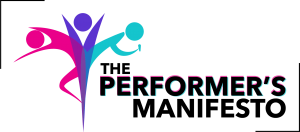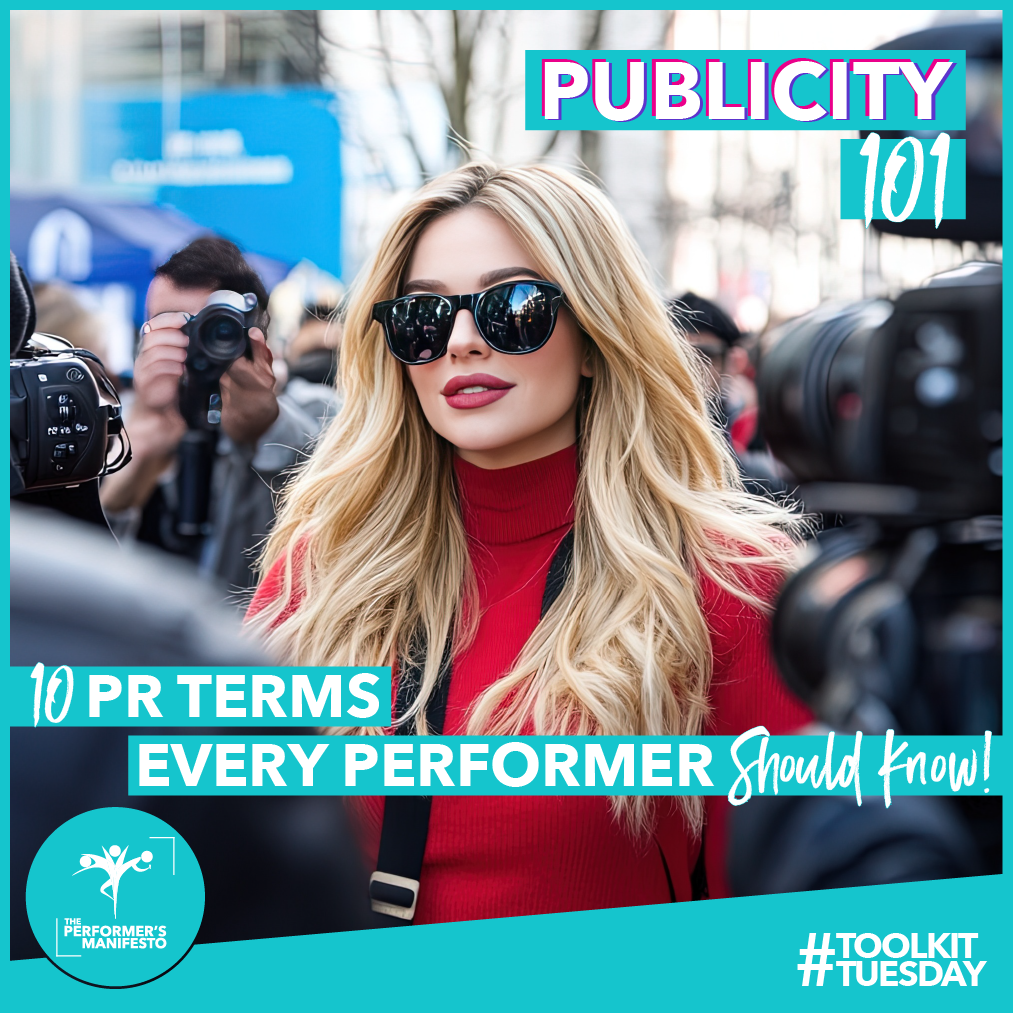This #ToolkitTuesday, we’re diving into the world of publicity and PR (public relations)—an area many performers overlook until it suddenly becomes essential. But here’s the thing: understanding publicity isn’t just for celebrities or those with agents and publicists. Whether you’re fresh out of drama school, hitting the audition circuit, launching your own show, or working consistently across gigs, knowing key PR terms can empower you to better navigate your career and seize valuable media opportunities.
Publicity is more than just “getting your name out there.” It’s about controlling your narrative, building your brand, attracting new opportunities, and being ready when the spotlight (the metaphorical kind) comes calling. By understanding the language of publicity, you’ll be able to communicate clearly with publicists, engage effectively with media professionals, and even DIY your own PR when needed.
Based on insights from Rick Krusky for Backstage, we’ve highlighted a performer-friendly guide to 10 essential publicity terms that every artist should know.
1. PR (Public Relations):
PR refers to how you’re perceived by the public and the industry at large. It’s your reputation – and in the performing arts, your reputation can open doors or close them. A publicist works to shape and protect that image.
2. Publicity:
This is the media attention you receive – interviews, press features, podcast appearances, and more. Great publicity boosts your visibility and can lead to new gigs, collaborations, and a wider audience.
3. Media:
Media includes all platforms that share content with the public – TV, radio, blogs, podcasts, newspapers, and digital outlets. It also refers to the people behind them: editors, producers, journalists, and hosts.
4. Media Outlet:
A media outlet is the actual publication or station distributing the content – like The Stage, Time Out, BBC Sounds, or a popular theatre podcast. Knowing which outlets align with your work is key to getting meaningful coverage.
5. Pitch:
A pitch is a proposal sent to a media outlet suggesting a story or interview. Publicists craft pitches that highlight what makes you or your project newsworthy. If you’re doing your own outreach, learning to pitch well is a huge advantage.
6. Coverage:
This refers to the actual article, interview, or mention in the media. Good coverage builds your credibility, boosts your profile, and can even help you secure future work.
7. Press:
Often used interchangeably with “media”, this term refers to both the industry professionals (such as journalists and reviewers) and the resulting coverage. “Getting press” is shorthand for being featured in the media.
8. Angle:
An angle is the unique approach or perspective used when telling your story. A strong, relevant angle makes your pitch stand out and gives journalists a clear reason to cover you.
9. Editorial:
Editorial content refers to articles or features that are not advertisements. Being part of an outlet’s editorial coverage adds authenticity to your publicity and helps establish you as a credible voice in the industry.
10. Media Training:
This is the preparation process before speaking with the press. Whether it’s a one-on-one with your publicist or a workshop session, media training helps you articulate your message confidently, avoid common pitfalls, and present your best self.
Why This Matters for You
The more fluent you are in publicity lingo, the more effectively you can manage your image, share your story, and create your own momentum in the industry. Many performers are multi-hyphenates – actors who write, dancers who direct, musicians who produce – so being able to communicate about your work publicly is a powerful skill.
Even if you’re not hiring a publicist (yet), understanding these terms ensures you’re ready when someone does take an interest in your work. Publicity is a key part of professional growth – so let’s treat it like another essential tool in your performer’s toolkit.
Here’s to building not just your craft, but your career.


